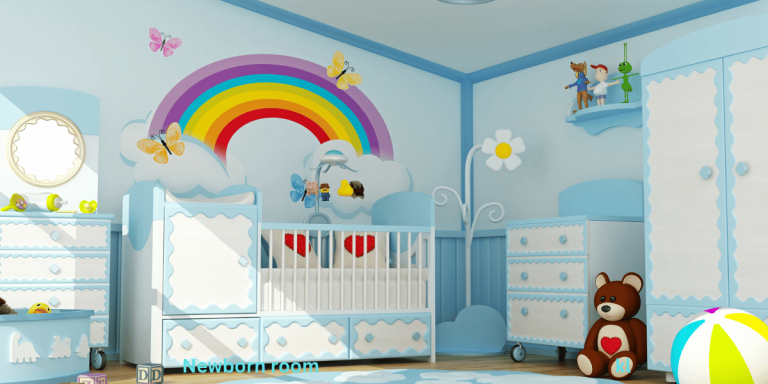Ah, the first trimester—when everything suddenly gets real. From the excitement of a positive pregnancy test to the whirlwind of emotions and physical changes that follow.
It can feel like an emotional ride. But don’t worry! We’re here to guide you through every step of this journey. Whether you’re wondering why your jeans are tight, why your nose is getting bigger (My case!) what your baby looks like right now, or just trying to keep your pregnancy under wraps, we’ve got you covered.
This First-Trimester Survival Guide: What to Expect Week by Week will help you understand what’s happening inside your body, and how your baby is growing, and offer practical tips to ease discomfort during these crucial first 13 weeks.
And remember, this is just the beginning of the incredible process of fetal development from conception to delivery—a journey full of awe-inspiring changes as your baby grows and prepares to meet you!
Week 1-2
Alright, let’s talk about those very first two weeks of pregnancy. Technically, you’re not even pregnant yet during this time, but these early days are crucial because they set the stage for everything that’s about to happen.
Pregnancy technically starts from the first day of your last period. Weird, right? These first two weeks are all about your body preparing for ovulation. Your uterus is getting ready, your hormones are doing their thing, and an egg is waiting in the wings. It’s like the pre-game for the big event—ovulation!
Ovulation, Fertilization, and When Implantation Occurs
Ovulation is where things get interesting. Around day 14 of your cycle (though it can vary!), your body releases an egg. If the stars align, and you’re trying to conceive, this is when fertilization happens in the fallopian tube, which is the tube that connects the ovary to the uterus.
It’s pretty wild to think this tiny, fertilized egg will become your baby! After that, the journey continues as the fertilized egg travels down the fallopian tube toward the uterus.
Then comes the implantation process. About 6-10 days after ovulation, the fertilized egg implants itself into the lining of your uterus, and this is when pregnancy “officially” begins.
You might not feel anything at this point (I didn’t!), but this is a crucial moment. Some women notice light spotting or cramping during implantation, but it’s normal.
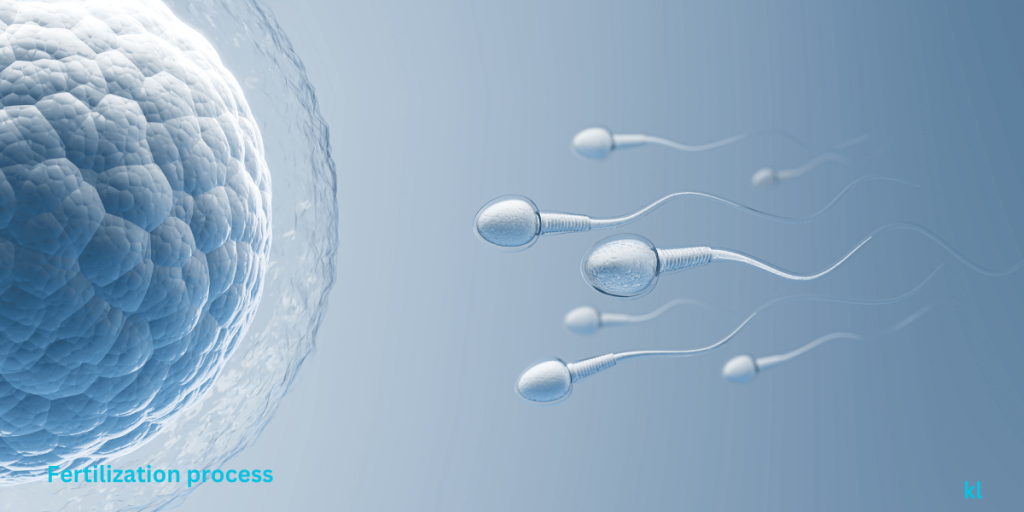
The Role of Hormones Like hCG
Once implantation happens, your body produces hCG (human chorionic gonadotropin), the pregnancy hormone. hCG levels rise quickly and are what those home pregnancy tests detect.
When it comes to pregnancy tests, here’s what I’ve learned: those early result tests can detect pregnancy up to 5 days before your missed period, but they’re not always accurate that early.
hCG levels double every 48 to 72 hours so for the most reliable results, wait until the day of your expected period and test first thing in the morning. And yes, I’ve been that person who took multiple tests just to be sure! After getting that positive test (congratulations, by the way!)
Early Pregnancy Tips
A few early pregnancy tips can make a big difference If you’re trying to conceive or just found out you’re pregnant. First, start taking prenatal vitamins if you haven’t already.
You’ve probably heard this before, but folic acid is super important during these first few weeks. It helps with neural tube development, eventually becoming your baby’s brain and spinal cord.
It’s also crucial to note that about 60% of pregnancy losses happen within the first 13 weeks of gestation, which is why taking care of yourself and following your healthcare provider’s advice is essential during this critical time.
Don’t forget to listen to your body—fatigue is one of the earliest signs of early pregnancy, and trust me, it can hit hard! In those first couple of weeks. Stay hydrated, eat a balanced diet, and keep stress levels low to support a healthy pregnancy right from the start.
If you’re like me, you probably jumped straight into reading every first-trimester guide: what to expect week by week you could find. This early phase can feel like a waiting game since you don’t always “feel” pregnant right away.
But trust me, your body is working overtime even when you can’t tell. Stick to healthy habits, and follow your doctor’s advice—this is just the beginning of an incredible journey!

Week 3-4
So, here’s where things start to get exciting! By week 3 or 4, you might still be clueless that you’re pregnant, but there’s already a lot happening inside your body.
These are the first real signs of pregnancy, and your little one, though still incredibly tiny, is busy making big moves in the form of embryo development. Let’s dive into what’s happening with both you and your baby during these critical weeks
Early Pregnancy Symptoms: Missed Periods, Fatigue, and Mood Swings
Okay, first things first—pregnancy symptoms. One of the biggest signs that might have you raising an eyebrow is a missed period. For many women, this is the “aha!” moment that makes you take a pregnancy test. But there are other little hints that you might be expecting even before your period skips town.
Fatigue is a major one. And I don’t just mean feeling a little tired; I’m talking full-on exhaustion. For me, it felt like I’d run a marathon after just a few hours of being awake.
Even the simplest tasks like walking to the mailbox or folding laundry can feel like running a marathon. My best advice is to listen to your body and rest whenever you can.
Some women also start feeling a little achy or have mild cramping around this time, which can be confused with premenstrual symptoms. It’s all part of your body adjusting to the embryo implantation process.
Oh, and don’t be surprised if you start feeling a little queasy or more sensitive to certain smells. Yep, it’s the classic nausea creeping in for many women!
Mood swings are another fun (aha!) symptom that might show up around this time. Thanks to all those hormone shifts, one minute you’re on cloud nine, and the next you’re furious because someone ate your leftovers (which you weren’t even planning to eat). It’s normal, though slightly ridiculous!
If you’re trying to navigate these early weeks, my advice is simple: listen to your body. Rest when you need to, stay hydrated, and eat nutrient-dense foods to combat that early pregnancy fatigue.
And sometimes, reading pregnancy books can help assure you that everything is fine inside you. It’s comforting to learn what’s happening step by step and know that your tiredness and cravings are all part of the journey.

How the Embryo Begins to Develop and Implant in the Uterine Lining
While you’re feeling all the feels, the embryo is busy getting cozy in your uterus. Around this time, the fertilized egg, now called a blastocyst, implants itself into the uterine lining.
This is when fetal development officially kicks off. It’s amazing to think that this tiny cluster of cells is already forming what will soon be your baby’s body parts, like the brain, heart, and spinal cord.
This is also a crucial time because the embryo is starting to rely on your body for essential nutrients and support. It’s like laying the foundation of a house—the stronger it is, the better everything else will come together. That’s why maintaining a healthy first trimester is so important.
Week 5-6
Okay, this is one of those “wow” moments you’ll never forget—weeks 5 and 6 are when you might first hear your baby’s heartbeat! If you’ve been eagerly waiting for a sign that a little human is growing inside you, this is it.
It can happen during an early ultrasound, and trust me, the sound of that tiny, rapid heartbeat is pure magic. It’s a huge milestone, and it makes all the fatigue and nausea a little easier to bear
Hearing the First Heartbeat: A Major Milestone
By week 6, if you’re lucky, the ultrasound can pick up your baby’s heartbeat for the first time. It’s incredibly fast, usually around 100 to 120 beats per minute—way faster than yours!
This little thumping sound is your baby’s heart just beginning to pump blood through its newly forming circulatory system.
It’s one of the earliest and most concrete signs that things are moving along beautifully. In my case, hearing that first heartbeat brought happy tears, a kind of relief that “yes, everything’s happening as it should.”
This also marks a point when fetal development is going into high gear. In just a short time, your baby’s size will grow from a mere dot to something closer to the size of a small pea. It’s not huge yet, but considering it’s doubled in size from week 4, that’s some serious growth!
Neural Tube Development and Organ Formation
At this stage, something critical is happening inside—your baby’s neural tube is forming. This tube will become the brain and spinal cord, making this a super important time for development. This is where all that advice about taking folic acid starts to make sense.
Folic acid helps prevent neural tube defects, so if you haven’t started your prenatal vitamins yet, now’s the time.
It’s one of those small steps that make a huge difference in ensuring healthy fetal organogenesis—that’s the fancy term for the formation of the major organs.
The development of the neural tube and other critical organs is happening so fast. By the end of week 6, tiny structures like the brain, kidneys, and liver are starting to take shape.
It’s wild to think about how all these pieces are coming together in such a short period. This is why keeping up with prenatal care and making sure your body’s getting the right nutrients is so important.
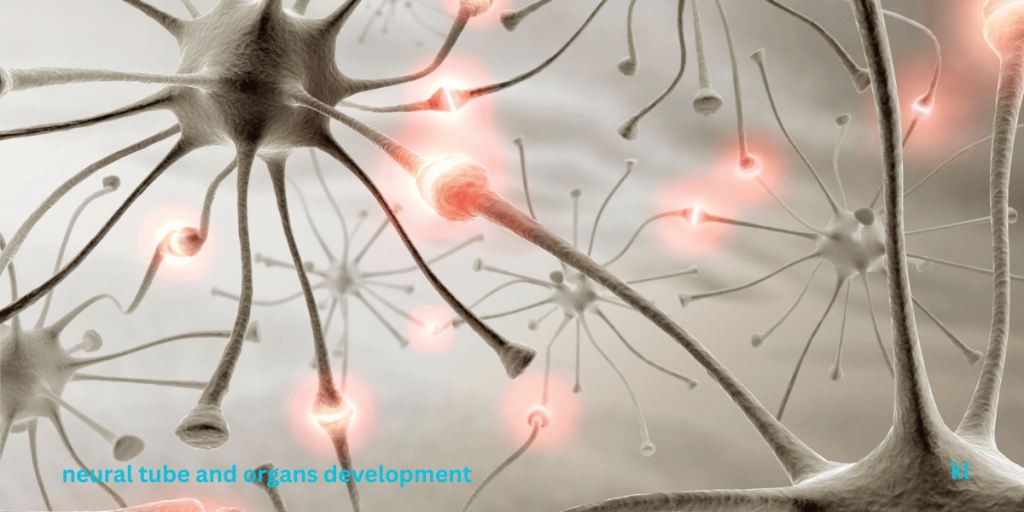
Early Pregnancy Symptoms Ramp Up
Around this time, your body might start giving you those unmistakable early pregnancy symptoms. For me, morning sickness was an unwelcome guest that arrived right on cue. And let’s be real, “morning” sickness? It should be called “all-day sickness.”
You might find yourself dealing with nausea at the most inconvenient times—like when you’re just trying to enjoy a normal meal, but suddenly the sight of food turns your stomach.
If you’re in this phase, hang in there! You can try morning sickness remedies like ginger tea, eating small meals, and avoiding strong smells to help manage it.
I found that cold foods like smoothies were easier to tolerate when everything else felt gross. Everyone’s different, though, so try different remedies until you find what works for you.
On the flip side, you might also notice pregnancy cravings kicking in around this time. These cravings can range from random to outright weird. One week I craved salty snacks like chips and pickles, and the next it was all about chocolate ice cream.
It’s kind of fun to indulge in these, but try to balance it out with healthy options too, since your baby’s growing organs need all the good stuff like protein, vitamins, and minerals.
I don’t want to sugarcoat it—pregnancy fatigue is real, and it can hit hard during these weeks. Your body’s working overtime to support your growing baby, so it’s normal to feel completely wiped out.
Week 7-8
Okay, here’s where things get exciting! Your little one is officially in the throes of fetal organogenesis. This means the heart, brain, lungs, kidneys, and other vital organs are starting to form. Yep, your baby’s entire foundation is being built right now.
Organogenesis Begins: Heart, Brain, Lungs, and Kidneys
By week 7 and 8, your baby’s fetal development kicks into high gear. The heart is continuing to grow and refine itself, pumping blood through the tiny body, while the brain is rapidly developing.
It’s hard to imagine, but those future thoughts, emotions, and movements are all being prepared right now! Meanwhile, the lungs and kidneys are starting to take shape. These organs will be crucial later on, but it all starts now with the process of organogenesis.
At your next prenatal visit, you may even have your first ultrasound, where you’ll get a glimpse of your baby’s early structures and growth. Let me tell you, seeing that little bean (because, yes, your baby is only about the size of a blueberry at this stage) is incredibly surreal.
You can’t see too much detail yet, but just knowing that everything is progressing according to plan feels like a major pregnancy milestone.
Baby’s Size and Limb Development
By week 8, your baby is still tiny but growing fast! Around this time, they’ll be around the size of a blueberry—roughly half an inch long.
While that sounds super small, it’s a massive leap from just a few weeks ago when the embryo was microscopic. You can practically track your baby’s size with a baby growth chart for pregnancy, which is fun because it gives you a sense of just how fast things are moving along.
One of the coolest things happening now is the appearance of little limb buds, which will eventually turn into arms and legs.
These tiny buds are just starting to develop, but it’s amazing to think that those are the beginnings of your baby’s hands and feet. And in no time, those little limbs will be wiggling all over the place
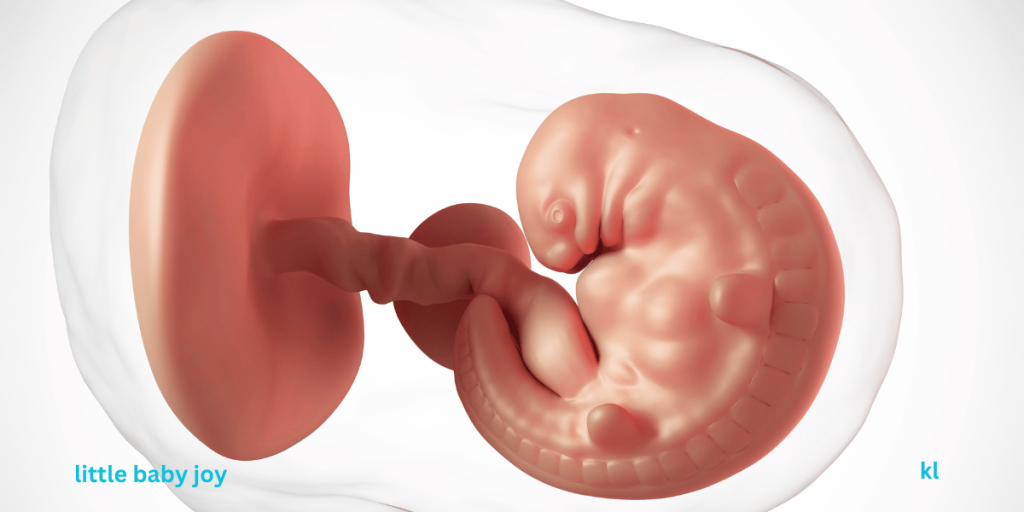
Managing Nausea and Fatigue: Practical Tips
Now, while your baby is working overtime to grow, your body is also doing some heavy lifting—and this is often when pregnancy symptoms like nausea and fatigue hit hardest.
But you have to try and manage these discomforts—all those early pregnancy aches are part of the process. Taking it one day at a time and focusing on small comforts can make a big difference.
If you’re anything like me, these weeks can feel like you’re in a constant fog of exhaustion, coupled with the ever-present wave of morning sickness.
However, If your morning sickness is severe (like, can’t keep anything down), don’t try to tough it out. That’s called hyperemesis gravidarum, and it needs medical attention. Don’t be a hero – call your doctor!
Here are a few practical tips that helped me survive this stage:
Small, frequent meals: Eating smaller meals throughout the day was a game-changer. I found that crackers, toast, or plain rice were my best friends. Anything too heavy would trigger my nausea. Keeping snacks handy for when the waves of hunger and nausea hit can be a real lifesaver.
Ginger tea: Ginger is known for helping with nausea. Sipping on ginger tea or chewing ginger candies helped keep my stomach calm. Sometimes, even just smelling fresh ginger can do the trick.
Rest, rest, rest: Listen, I get it—you’ve got things to do, but this is the time to embrace naps. Your body is working overtime to support your baby’s fetal growth, and that first-trimester fatigue is no joke. It’s okay to let yourself rest more than usual.
Don’t push through exhaustion—trust me, you’ll feel better if you give in and sleep. I also found that using my favorite essential oil blend made a world of difference.
A few drops of lavender in my diffuser created the perfect calming vibe, helping me relax and drift off when I needed it most.
Stay hydrated: Drinking water can sometimes be tough when you’re nauseous, but staying hydrated is so important. I found that ice-cold water or sucking on ice chips helped when plain water felt like too much. If water still isn’t doing it, try electrolyte drinks or fruit-infused water for a little flavor.
Focus on your health: It’s easy to feel overwhelmed with all the changes, but maintaining a healthy first trimester is key. Keep taking your prenatal vitamins, and make sure you’re getting enough folic acid, which is crucial for preventing neural tube defects.

Accept help when offered (this is not the time for superhero syndrome)
My best advice? Keep a symptom diary. It helps you track patterns and figure out your triggers. For example, I discovered that eating too close to bedtime made my heartburn way worse, and certain smells were guaranteed nausea triggers.
The silver lining? These symptoms usually start improving around weeks 12-14. Until then, be kind to yourself, rest when you need to, and remember that growing a human is hard work!
And if anyone tries to tell you that “pregnancy is beautiful,” feel free to throw a cracker at them – preferably one of the many you now keep stashed everywhere!
Screening Tests and Pregnancy Milestones
You might also be thinking about pregnancy screening tests during these weeks. Some early tests can help detect certain genetic conditions, so it’s a good idea to discuss your options with your healthcare provider.
These tests can offer peace of mind, especially when combined with seeing how much your baby is growing from week to week.
Week 9-10
By week 9 and 10, your baby is already starting to move! Though these movements are too small for you to feel yet, they’re an exciting milestone in your baby’s fetal development.
Your baby’s tiny muscles are now forming, and these initial twitches and flexes are the first signs of baby movement in the first trimester.
It’s fascinating to think that even though you can’t sense it, your baby is actively practicing movements that will eventually turn into those little kicks and punches you’ll feel later on.
Early Fetal Movements and Muscle Development
During these weeks, your baby’s muscle fibers are developing rapidly, leading to small, jerky movements within the uterus. While it’s too early to detect these flutters yourself, rest assured that your baby’s motor skills are already beginning to take shape.
These early movements also play a crucial role in your baby’s fetal growth timeline, aiding in the development of the nervous system and coordination that will continue to improve in the coming weeks.
Right now, they’re about the size of a grape, and by tracking your baby’s growth chart for pregnancy, you can visualize the milestones your baby is hitting as they prepare for more noticeable activity in later trimesters.
The Placenta Takes Over Hormone Production
A key transition occurs during weeks 9-10, as the placenta takes over the crucial role of hormone production from the corpus luteum.
This shift is vital for maintaining a healthy pregnancy, as the placenta now regulates the release of hormones such as progesterone and estrogen to support your baby’s growth.
With this change, some women start to notice a decline in certain pregnancy symptoms like nausea and fatigue, though it may take a little longer for some. Don’t worry if that’s not the case for you yet.
Everyone’s pregnancy is different, and for some, these symptoms might linger a little longer Either way, the placenta is now fully responsible for nourishing your baby and maintaining optimal conditions for their development.
This period is also a great time to check in with your healthcare provider about your prenatal care plan and any necessary adjustments as you move deeper into your pregnancy journey.
If there’s one piece of advice I can’t stress enough during this stage, it’s to keep taking your prenatal vitamins. Your baby is growing at an incredible rate, and they need all the nutrients they can get, especially now that the placenta is in full swing, delivering everything directly to your little one.
I made the mistake of skipping my prenatal care routine a few times in those early weeks because I thought, “What’s one missed vitamin?”—but that’s not the right mindset!
Missing those essential nutrients, especially things like folic acid, can impact your baby’s development, especially when it comes to preventing neural tube defects and iron to support blood flow.
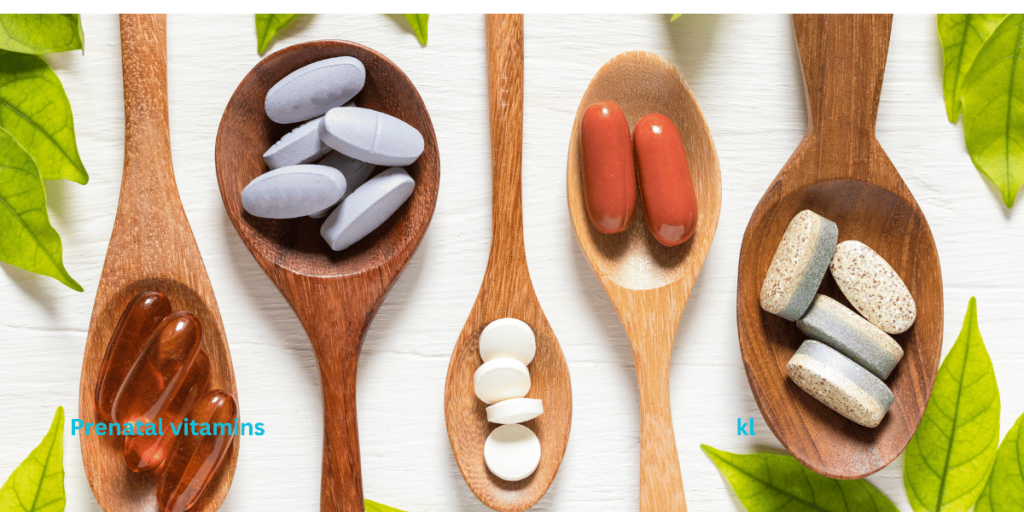
So, trust me when I say, make your prenatal vitamin part of your daily routine, even if the nausea makes it tough some days.
Hydration is another key factor. With everything going on inside your body—hormone production, fetal development, and the extra blood flow—you’ll need more fluids.
Inadequate hydration can lead to issues like fatigue, headaches, or even complications with your pregnancy. If you find it hard to drink plain water, try incorporating hydrating foods like fruits or electrolyte drinks that are pregnancy-safe. And let’s be real, keeping hydrated just makes you feel better all around

Managing Your Growing Nutritional Needs
Speaking of feeling better, your pregnancy nutrition becomes more important than ever during this period. By weeks 9 and 10, your baby is working on all the essentials, from brain development to muscle growth, and that means you need to fuel your body properly.
If you’re dealing with pregnancy fatigue or nausea, you might not feel like eating much but try to keep your meals balanced and nutritious. Foods rich in iron, calcium, and omega-3s are great choices during this time.
I found that having small, frequent snacks worked better for me than large meals, especially when dealing with those early pregnancy cravings. You might also want to add some smoothies to your diet to sneak in extra nutrients without feeling overly full.
Stay focused on maintaining a healthy pregnancy with the right diet, hydration, and regular prenatal checkups as your baby continues to develop at this remarkable pace.
Week 11-12
By weeks 11 and 12, you’ve made it through much of the first trimester, and your baby is experiencing a surge in fetal development. This is a time of rapid growth, and for some moms-to-be, weeks 11-12 bring a much-needed energy boost!
That overwhelming exhaustion you’ve been battling? It might finally start to ease up. While not everyone experiences this sudden return of energy, many women feel a bit more like themselves again as the body adjusts to all the pregnancy hormone changes of the first trimester.
This is great news if you’ve been struggling with first-trimester fatigue or even pregnancy nausea. Use this time to enjoy the boost— do prenatal exercises like taking a walk, stretching, or getting things done around the house. Just remember, a healthy pregnancy means listening to your body, so don’t overdo it!
But the most exciting changes? Your baby’s face is starting to take shape, and those little fingers and toes are no longer webbed!
Your Baby’s Development: Facial Features and Functional Organs
At this stage, your baby is around the size of a lime, measuring about 2 inches from head to rump, according to the baby’s size in the first trimester. Tiny but mighty!
Those adorable facial features—eyes, ears, and nose—are becoming more defined, and their fetal growth timeline is progressing quickly.
Their body is straightening out, and their limbs are no longer. Fingers and toes have separated and are less like tiny paddles.
If you were to get a sneak peek via an ultrasound, you’d see your baby looking more like, well, a baby! Their first-trimester growth also includes significant advancements in internal organs. The liver is producing red blood cells, and the kidneys are starting to process waste.
Organs like the intestines, which have been developing outside the abdomen, are moving into place, making this a crucial point in fetal development as organs become more functional
Navigating Prenatal Screenings and Tests
Weeks 11-12 also bring important pregnancy screening tests. One of the most common is the nuchal translucency (NT) screening, an ultrasound that checks for signs of chromosomal abnormalities, like Down syndrome, by measuring the fluid at the back of your baby’s neck.
This screening is often combined with a blood test to give a clearer picture of your baby’s health. Another screening that may be discussed with you is the cell-free DNA test, which analyzes fetal DNA circulating in your blood to assess the risk for chromosomal conditions.
Navigating these screenings can feel overwhelming, but don’t hesitate to ask your healthcare provider questions and talk through any concerns.
These tests can give helpful insights into your baby’s health and development, and discussing the options with your doctor is part of good prenatal care.
Tips for a Healthy Pregnancy and Prenatal Nutrition
As you move closer to the second trimester, staying on top of your prenatal care remains essential. Focus on pregnancy nutrition to support your baby’s continued growth.
Make sure you’re getting enough folic acid, iron, and calcium, which are all crucial for both you and your baby.
Eating a balanced diet filled with leafy greens, lean proteins, and whole grains will ensure your body is well-prepared for the energy demands of the second trimester.
Remember that each milestone, whether big or small, is a step toward meeting your little one. Tracking your baby’s fetal growth timeline and hitting those key pregnancy milestones is exciting, but also take time to enjoy the progress.
Keep attending your check-ups, eat well, and take it easy as you wrap up the first trimester!

FAQs
What are the signs that my pregnancy is going well in the first trimester?
Here are some reassuring signs that your pregnancy is progressing well during the first trimester:
Steady Weight Gain – Even though it might be slight, a steady weight increase (around 1-5 pounds) is a positive sign.
Mild Pregnancy Symptoms – Experiencing symptoms like nausea, fatigue, or breast tenderness indicates your pregnancy hormones are increasing as expected.
Healthy Fetal Growth – An ultrasound showing appropriate fetal growth, like the formation of the gestational sac or a fetal heartbeat around 6 weeks, is a great sign.
Normal Prenatal Test Results – Routine blood work and genetic screening results coming back normal show that everything is progressing smoothly.
Stable hCG Levels – Rising levels of hCG (the pregnancy hormone) in early tests are a key indicator of a healthy pregnancy.
No Significant Cramping or Bleeding – While some spotting can be normal, the absence of heavy bleeding or intense cramping is a reassuring sign
What are the danger signs of pregnancy in the first trimester?
Here are some danger signs to watch out for during the first trimester of pregnancy:
Heavy Bleeding – Bright red or heavy bleeding, especially if accompanied by cramping or clots, could be a sign of danger. Please see your doctor!
Severe Abdominal Pain – Intense pain on one side of the abdomen or pelvic area could indicate complications.
Severe Dizziness or Fainting – Persistent dizziness, fainting, or feeling lightheaded might suggest low blood pressure or complications.
Severe Nausea and Vomiting – While nausea is common, excessive vomiting (hyperemesis gravidarum) can lead to dehydration, weight loss, and malnutrition, requiring medical attention.
High Fever – A fever higher than 100.4°F (38°C) could signal an infection that may affect the pregnancy, such as a urinary tract infection.
Painful Urination – This could indicate a urinary tract infection, which is common in pregnancy but needs treatment to avoid complications.
Sudden Loss of Pregnancy Symptoms – A sudden disappearance of pregnancy symptoms like nausea or breast tenderness can sometimes be a sign of miscarriage. (Which is not your story!)
When should I schedule my first prenatal appointment?
You should schedule your first prenatal appointment around weeks 6 to 8 of your pregnancy, or as soon as you find out you’re pregnant.
This first visit is important for confirming your pregnancy, estimating your due date, and beginning essential early tests and screenings.
If you have any pre-existing health conditions or concerns, it’s a good idea to reach out to your healthcare provider even earlier
Remember, every pregnancy journey is unique! While these first 13 weeks might feel like a rollercoaster, they’re laying the foundation for your amazing adventure into motherhood.
Don’t hesitate to reach out to your healthcare provider with concerns – that’s what they’re there for! Stay positive, take it one day at a time, and remember that the challenges of the first trimester typically improve by week 14. You’ve got this, mama!


